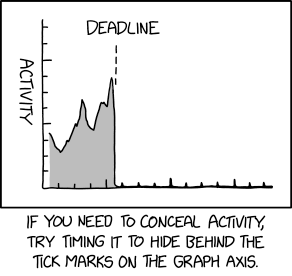Regular Expression Principles
| . | Dot | Matches every character |
| [] | Set | Matches the specified set of characters (hyphens may be used to specify a range of characters) |
| () | Brackets | Groups patterns together so they can be treated as one |
| | | Alternative | matches either the pattern to the left, or the pattern to the right |
| * | Kleene star | Matches any number of repetitions of the pattern to the left (even none) |
While there are additional constructs available in most Regular Expression syntaxes, the above are sufficient to express all Regular Expressions; the additional constructs are in effect merely shorthand ways to express more complicated patterns. For instance, the + operator, meaning 1 or more repetitions of the pattern to its left, is equivalent to writing the pattern to match once, and then once again with a Kleene star. For instance, [a-f]+ is just a more terse way to write [a-f][a-f]*.

Guest
2:30 am, Thursday, 5 May 11